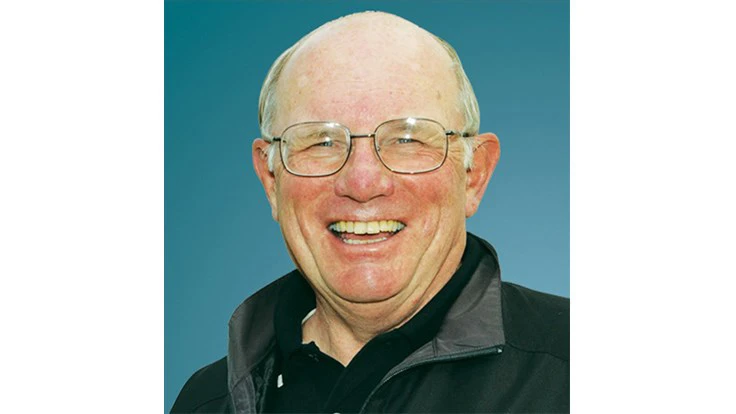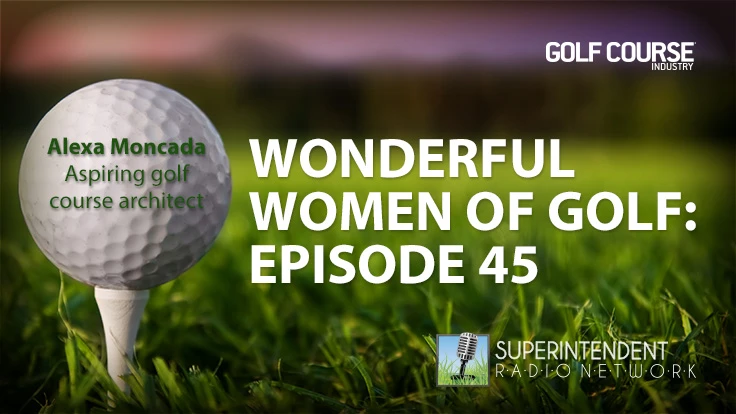
From the June 2015 issue of GCI ...
About the time of this year’s Masters Tournament, a new James Patterson book hit the bookstores. “Miracle at Augusta” immediately had a spot in my library, along with 33 other books about the Masters and Augusta that are in my collection.
It’s a slender volume – about 200 pages – and is easy to read. Patterson is one of our most experienced and prolific authors, and the story he tells in “Miracle” holds your interest tightly. It can be read in one sitting.
The three pages that make up Chapter Two describe the scattering of the ashes of a beloved friend, grandfather and father who was a long-time member of the Creekview Country Club and had recently died. The group of 200 gathered and walked holes No. 1 through No. 18. At each hole, a few of “Pop’s” ashes were scattered and memories shared.
That brief chapter struck a chord with me. Over my 36-year career as a superintendent, a number of scatterings of cremains happened on our course. When asked, I did my best to accommodate them. There were more than likely many more scatterings I was not aware of. There is little to no evidence of the ashes, so unless someone tells you, you would never know.
The remains of a cremation are called ashes, but they really aren’t that. The ashes are actually bone pieces that have been pulverized. My experience is that cremains are more like sand. Cremains pose absolutely no health risk, no safety issues and no environmental concerns, reasons it never bothered me to allow scatterings to happen on our golf course.
The first time I was asked about scattering ashes on the golf course, I got an OK from the green committee chair. Next, I checked with the municipal administrator where our course is located and received his permission. Finally, I checked with an attorney-member and learned there weren’t any state law restrictions (except to reduce particle size to 1/8 inch or less). He even suggested the best way to describe state law was “no laws say yes and no laws say no.”
It is not a surprise that golf courses are where some want their remains scattered. They are the favorite places for many people. Others choose their farm fields, some select a favorite fishing spot or a park they love. A friend of mine scattered his WWII B-25 pilot father’s remains by air over open land. I know of cremains that will be scattered, when the time comes, in a flower garden.
Maybe the most unique and curious scattering I’ve known of was noted on the CBS program “60 Minutes” that aired this past May 3. The Scottish island of Islay is known worldwide as home of the finest single malt whiskey distilleries. A serious connoisseur of single malts requested his cremains be scattered on the waters faced by his favorite distillery! Really, there aren’t many limits when it comes to scattering of ashes.
My involvement ran the gamut from tacit approval to actual assistance (but always in the background). Tacit approval came with the caveat “no cremains on putting greens.” They could potentially interfere with putting or mowing, and the lighter color might make them visible.
In two instances, club member couples wanted their remains placed in the root zone of a new tree donated to the course for each person. Each couple donated two new trees and family members scattered the ashes around the partially planted tree. We then finished planting the tree, all before play started. The families were pleased and it seemed a very appropriate honor for long-time members, if they wished. There may well have been memorial services immediately after passing, but the scattering can take place long after at a time convenient for all the family members.
I have also placed cremains in a shallow hole under the canopy of a favorite tree – if I remember correctly I even used a cup cutter to make the hole. In another case, cremains were placed on the surface of a remodeling project and became a part of the feature as it was graded in.
Golf courses are beautiful places, and the increased use of cremation in our society makes me believe there could be an increase in cremains scattering on them. Our golf course is on the National Park Service List of Historical Places in America for our collection of Sac Indian effigy and burial mounds. Even 1000–1500 years ago the property was considered a beautiful place and a fitting final resting place. The same is true today.
If a superintendent is involved, it should be with respect for the deceased and the family, with consideration for players and in accordance with whatever rules or laws apply. And today, in the end, it is a thoughtful final place for a person who also loved golf.
About the time of this year’s Masters Tournament, a new James Patterson book hit the bookstores. “Miracle at Augusta” immediately had a spot in my library, along with 33 other books about the Masters and Augusta that are in my collection.
It’s a slender volume – about 200 pages – and is easy to read. Patterson is one of our most experienced and prolific authors, and the story he tells in “Miracle” holds your interest tightly. It can be read in one sitting.
The three pages that make up Chapter Two describe the scattering of the ashes of a beloved friend, grandfather and father who was a long-time member of the Creekview Country Club and had recently died. The group of 200 gathered and walked holes No. 1 through No. 18. At each hole, a few of “Pop’s” ashes were scattered and memories shared.
That brief chapter struck a chord with me. Over my 36-year career as a superintendent, a number of scatterings of cremains happened on our course. When asked, I did my best to accommodate them. There were more than likely many more scatterings I was not aware of. There is little to no evidence of the ashes, so unless someone tells you, you would never know.
The remains of a cremation are called ashes, but they really aren’t that. The ashes are actually bone pieces that have been pulverized. My experience is that cremains are more like sand. Cremains pose absolutely no health risk, no safety issues and no environmental concerns, reasons it never bothered me to allow scatterings to happen on our golf course.
The first time I was asked about scattering ashes on the golf course, I got an OK from the green committee chair. Next, I checked with the municipal administrator where our course is located and received his permission. Finally, I checked with an attorney-member and learned there weren’t any state law restrictions (except to reduce particle size to 1/8 inch or less). He even suggested the best way to describe state law was “no laws say yes and no laws say no.”
It is not a surprise that golf courses are where some want their remains scattered. They are the favorite places for many people. Others choose their farm fields, some select a favorite fishing spot or a park they love. A friend of mine scattered his WWII B-25 pilot father’s remains by air over open land. I know of cremains that will be scattered, when the time comes, in a flower garden.
Maybe the most unique and curious scattering I’ve known of was noted on the CBS program “60 Minutes” that aired this past May 3. The Scottish island of Islay is known worldwide as home of the finest single malt whiskey distilleries. A serious connoisseur of single malts requested his cremains be scattered on the waters faced by his favorite distillery! Really, there aren’t many limits when it comes to scattering of ashes.
My involvement ran the gamut from tacit approval to actual assistance (but always in the background). Tacit approval came with the caveat “no cremains on putting greens.” They could potentially interfere with putting or mowing, and the lighter color might make them visible.
In two instances, club member couples wanted their remains placed in the root zone of a new tree donated to the course for each person. Each couple donated two new trees and family members scattered the ashes around the partially planted tree. We then finished planting the tree, all before play started. The families were pleased and it seemed a very appropriate honor for long-time members, if they wished. There may well have been memorial services immediately after passing, but the scattering can take place long after at a time convenient for all the family members.
I have also placed cremains in a shallow hole under the canopy of a favorite tree – if I remember correctly I even used a cup cutter to make the hole. In another case, cremains were placed on the surface of a remodeling project and became a part of the feature as it was graded in.
Golf courses are beautiful places, and the increased use of cremation in our society makes me believe there could be an increase in cremains scattering on them. Our golf course is on the National Park Service List of Historical Places in America for our collection of Sac Indian effigy and burial mounds. Even 1000–1500 years ago the property was considered a beautiful place and a fitting final resting place. The same is true today.
If a superintendent is involved, it should be with respect for the deceased and the family, with consideration for players and in accordance with whatever rules or laws apply. And today, in the end, it is a thoughtful final place for a person who also loved golf.
Latest from Golf Course Industry
- Turfco introduces riding applicator
- From the publisher’s pen: The golf guilt trip
- Architect Brian Curley breaks ground on new First Tee venue
- Turfco unveils new fairway topdresser and material handler
- Ignite Attachments adds new box plane and grapple
- Mackenzie & Ebert working on new Caribbean course
- Keswick Hall renovating Full Cry course ahead of big year
- The alpha wolf





